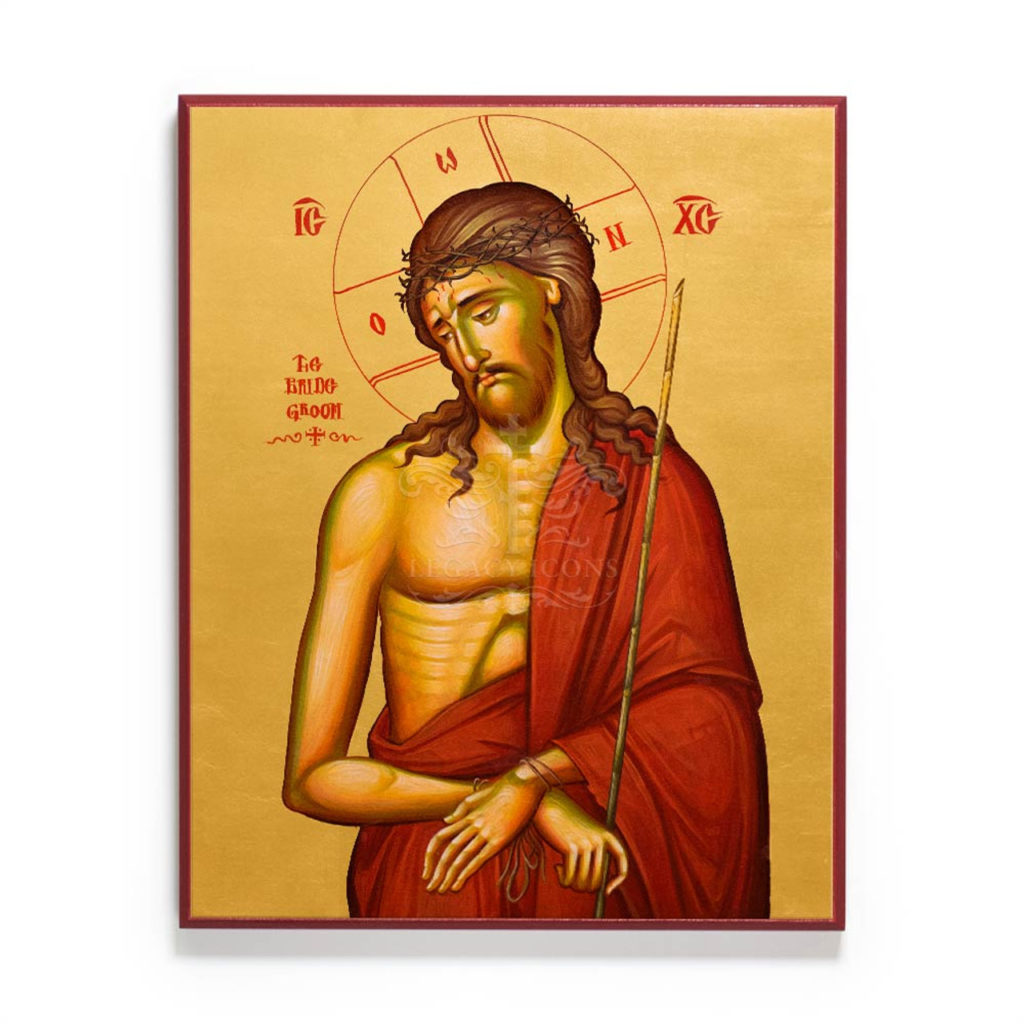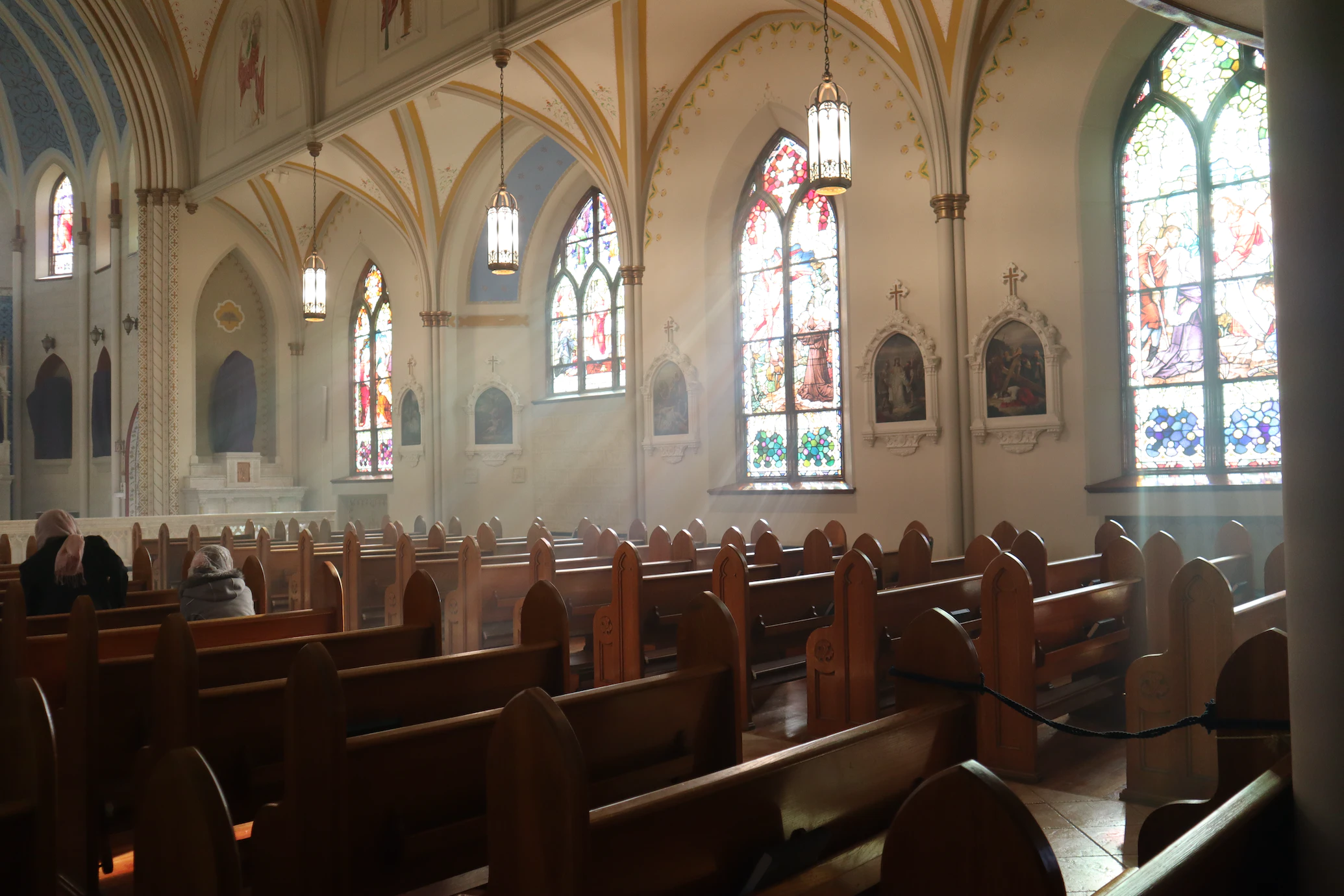What the Spousal Metaphor Reveals and Conceals
Author’s note: I initially wrote this piece in September 2019, in response to the article referenced in the
first paragraph below. The “spousal metaphor” is back in Catholic news after yesterday’s interview with Pope Francis in America Magazine, in which he exploited the metaphor to dismiss the sincerely discerned vocations of women to the priesthood. Given this, we are re-running this piece as an additional rebuttal to the harmful theology expressed by Pope Francis and other members of the hierarchy.
In the article “Should Women Preach at Mass? Here’s a Better Question” (Pia de Solenni, Sept. 9), the question referred to in the title comes at the end: “Does being a woman or man affect what I do?”
As is true for many deceptively simple questions, the answer is yes, and the answer is no. We, as Catholics, are an incarnational people – we believe that our embodiment is sacred, a locus of divine
revelation. That is the heart of the “sacramental principle,” which theologian Richard McBrien defines this way: “Everything is, in principle, capable of embodying and communicating the divine.”
Then yes, of course, my embodied self is not incidental to how I move through the world. I am a white, heterosexual, middle-class, American woman, and all of those characteristics affect how I interact with my specific time and culture, and how my specific time and culture (including the Church) interacts with me. As someone who is biologically female, my body lives out physiological processes that biological males, generally, do not. Somehow, God moves and works within me as myself, concretely, to participate in the building of God’s kingdom.
And yet, the answer to the “better question” is also “no.” Because we are complex, and in the kaleidoscope of our identities various characteristics come to the fore or recede to the background, not everything I do is determined by my female-ness. To break down our activities in the world as simply “feminine” or “masculine” is dangerously essentialist and binary, and yet, too often, that is exactly what the Church purports to do with its sacramental theology.
In conversations about the priesthood—in particular, the role of the priest in relation to the laity, and the need for an all-male priesthood—the main modern argument tends to hinge upon a slavishly literal interpretation of the symbol of Christ as bridegroom and Church as bride. Priests must be men, the argument goes, because they act in persona Christi, bridegroom to the Church as bride, and therefore must resemble that role for the symbol to ring out its truth.
The “resemblance” in this argument refers not to fidelity, or commitment, or mutual relationship, but to maleness. Christ was a man on earth, and so only men can properly play the role of Christ in the Eucharist. Anything else would confuse the symbol. Somehow, we do not need our priests to be Middle Eastern or in their early thirties to understand that they act in persona Christi, but we do need the Y chromosome and its accompanying body parts.
It is worth noting that the popular argument rarely continues to its logical conclusion: that the non-ordained participants in the liturgy should all be women, so as not to obscure the metaphor that the Church is the bride of Christ. Somehow, we are able to understand that the Church, comprised of women
and men, can be in the symbolic role of “bride” (a typically female role), but we cannot imagine that men and women as priests could be in the symbolic role of “bridegroom.”

This does a disservice to the symbol of the spousal relationship, and shows a disturbing misunderstanding of the role of symbols. A symbol, Paul Ricoeur reminds us, both reveals and conceals – it is inherently ambiguous and multivalent. The symbol of Christ as bridegroom reveals Christ’s faithful
love, deep commitment, and union with us. The symbol of Christ as bridegroom conceals the mystery,
complexity, and extravagance of God’s relationship to us, which has also been described Biblically as like a mother with her weaned child, or an eagle tucking her young under her wing, or a solid rock upon which to stand. Feminist theologian Susan Ross writes in her book Extravagant Affections “Sacramentality is an inherently ambiguous reality, and the dangers of overstating either its disclosive or concealing powers are great [emphasis in original].”
There is no denying that the metaphor of God as bridegroom to God’s people, the bride, holds a central, even essential role in our understanding of God’s loving fidelity towards us. But it is not the only metaphor, and like the Bible, it reduces to illegibility if it is taken exactly literally. Furthermore, what is
“literally” to mean? In different times and cultures—including the ancient Hebrew culture from which the God-as-bridegroom metaphor originally arose—the spousal relationship took on a variety of forms. In
most of those times and cultures, a marriage relationship was inherently unequal, with the man superior to and dominant over the woman (or women, in the case of polygamous societies).
In the article “Bridegroom: A Symbol of Union, Not Separation,” Carroll Stuhlmuller wrote this of the symbol: “The Yahweh-Spouse or Jesus-Bridegroom image does not stress sexual differences but intimate, joyful and fruitful union of all persons; it rests in the psychological complexity of masculine and
feminine genders in everyone, including God and Jesus.”
Does being a woman affect what I do? Certainly. I have borne children; I have literally given my body and blood for the sustenance of another human being. Does it affect everything I do? Should it limit what I do in the sacramental life of the Church? No and no. It should be glaringly obvious that there is nothing inherently “male” or “masculine” about breaking open the word of God; about, as theologian and Dominican Sister Mary Catherine Hilkert defines preaching, naming grace in the depths of human experience. We veer into sinful, even heretical, territory if we suggest that only men are the official interpreters of where grace is found in our lives.
Part of the female experience, especially for those of us who are mothers, is the experience of exhaustion. I am tired from the relentless work of parenting young children, yes; but I am also tired of rehashing the same tired arguments about why women must be shut out of the priesthood, barred from any meaningful decision-making and leadership roles in the Church. Tired of doing the same work that
other women have already done of shining light on our tradition to reveal that women have been here all
along, participating in the sacramental economy and birthing God’s reign into the world. Tired of the attempt by the hierarchy to distract women by arguing amongst ourselves about our own worth and validity while clericalism marches ever-onward, aided by a spousal metaphor that becomes about power,
not covenant.

The prophetic books of the Hebrew Scriptures are filled with some of the most beautiful spousal imagery in the Bible. But they also remind us that God says to us: “I am about to do a new thing; now it springs forth, do you not perceive it?” (Isaiah 43:19) Our ability to perceive the constant newness of God’s ongoing creation is not predicated by our gender. Our ability to proclaim it at Mass shouldn’t be, either.

5 Responses
Patriarchal theology, plain and simple. He is reducing the Christ-Church mystery to a patriarchal allegory. Consider:
http://pelicanweb.org/CCC.TOB.html
Katie, wonderful! You provide convincing and accessible theological arguments. Thanks for rerunning this piece.
Thank you for running this insightful essay again. Those of us who previously missed this are grateful to have been able to read it! The metaphor of bride and groom for Christ and Church or God and People has never really made sense to me, and Katie thoroughly deconstructs it and explains why: it is experienced more as a metaphor about patriarchal power, not familial commitment and togetherness.
As a current feminist theology student, I applaud this wonderful contribution and wish only more could hear it! I wonder if you found it as upsetting as I when our Pope also suggested that “Mariology” is something for women “to have” in our church….well, I just completed a course in Mariology, and while it was very finely taught, the theology behind it was very disturbing for me – without going into all of it’s odd beliefs in the history of early Catholicism – such as Mary being born so sinless that some believed, I kid you not, she urinated honey – we must admit to ourselves that the Virgin Mary, as wonderful as a symbol for unconditional love that she is, is another symbol – Virgin/ Motherhood – if taken literally has been proven to be very harmful to the mental health of so many females AND males , something our Pope, whom I believe respects women without understanding us, has great difficulty seeing. And how can this ever change if women are never allowed in to the ministry?
I had forgotten how wonderful this post was and how it enhances, among other things, our understanding of the use and misuse of symbols. Thank you Katie for reminding us. When I was studying English literature in college, one of my professors, while focusing on the value of understanding and appreciating symbols in these works, also cautioned us about overdoing the interpretations. “Don’t become a ‘symbol Simon’, he said. I pass this on to the Pope and others who use a symbol as a barrier to full inclusion.